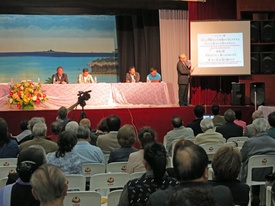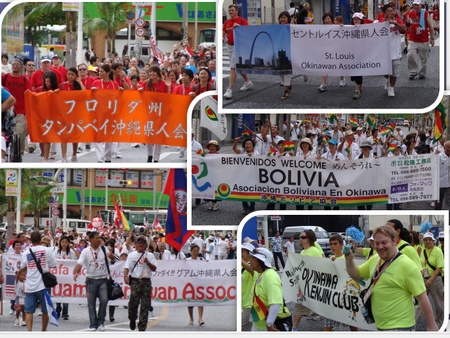Bringing Their Culture in Mass Immigration
“You can see the Okinawa of the Meiji era in Brazil”—local papers in Okinawa often use this line. This is because people brought their customs and language to Brazil in mass immigration.
Even to this day, Uchinaaguchi (the Okinawan language) is used at home among many families. In Okinawan-hosted events, you would see “Uchinaaguchi plays,” and the “Uchinaaguchi speech contest” is held every year. Also, in the Okinawan forum which took place in May this year, there was a heating debate on the theme of “Uchinaaguchi Is Our True Treasure.”
Yet, the number of such speakers is radically decreasing in the homeland Okinawa. In the prewar era, teachers from the mainland prohibited the use of the Okinawan language and punished the students who spoke the language at school by putting a “dialect card” around their neck. In the aftermath of the war, Okinawa was occupied by the US military and for the following 27 years, until the return of Okinawa in 1972, the Okinawan people intentionally stopped using Uchinaaguchi in order to become fully “Japanese” to recover from the war damage, which further discouraged them to speak the language.
After the recovery, they began to rebuild their Okinawan identity. During the ’80s, when TV stations and local papers in Okinawa reported the life of Okinawans who lived outside of the prefecture, people started to pay attention to the “Okinawa from the Meiji era” in the Nikkei people in South America.
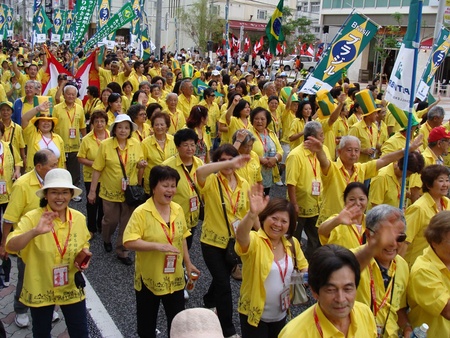
In the movement to bring back their Okinawan identity, they started the World Uchinanchu Festival in 1990 which owes much to the historical background of mass immigration from Okinawa.
This is a huge event where people of Okinawan descent come to Naha from all over the world. I went to the Fifth World Uchinanchu Festival in October, 2011, to report on the event and was overwhelmed by the excitement of people. There is no other prefecture like Okinawa.
Nearly 5,200 Okinawans from overseas, representing 25 countries, joined the event, and more than 1,200 people came from Brazil alone. From Hawaii, people chartered two jumbo jets. More than half of the participants came from Brazil and the U.S.
The World Gets Upside Down in Brazil
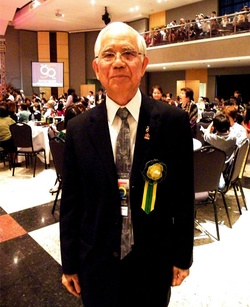
What I found remarkable at the 100th anniversary of the Nikkei community in 2008 was the movement to rebuild a Nikkei society with Okinawan people as the central force. Among the three biggest Nikkei organizations, Akeo Yogui, an Oroku Nisei, became chairperson of Federação Associações Província Japão Brasil (Federation of Japanese Prefectural Association in Brazil), in addition to Kokei Uehara, mentioned above, serving the same role of chairperson at Sociedade Brasileira de Cultura Japonesa e de Assistência (Brazilian Society of Japanese Culture and Assistance) in Brazil. And in April, 2015, the first female chairperson, Harumi Goya, took office at the association. She also moved to Brazil as a child immigrant in the postwar era, from Yaese-cho, Okinawa.
Since the 19th century, people who got lost in the swirl of social distortion have moved to the new world, the land of America, from “old” countries in Europe and Asia. As a result, such people from the old world stood up to build a new society on their own in South America.
In the world, the rich remain in old places, and those negatively affected by social distortion make the primary body of emigration population in new places and countries. In other words, the once socially vulnerable people are getting together to make a big country. We can see the social hierarchy starting to turn upside down.
According to the column series “The Business Model That Created World History” from the weekly magazine Shincho, published on November 27, 2014, the U.K. currently has 4.67 million people living outside of their country, while Japan has 0.77 million, based on the research of World Bank. Ratio-wise, the number accounts for 7.5% of the entire population of the U.K., and 0.6% of that of Japan. The writer says that the Japanese are reluctant to emigrate because they would become “outcasts” once they move out. He points out that the Japanese business people—or overseas representatives—always have their attention at their headquarters in Japan, and they become “international” representatives in the company once they return. However, immigrants become the residents of diaspora (people who lost their homeland). In simple words, they are outcasts in the eye of the Japanese in Japan.
Masataka Kousaka, an international political scholar, writes in his paper that, “While the U.K. was an oceanic nation, Japan was an island,” which seems to point out the closed mindset of the Japanese in Japan and argues that while both countries are geographically islands, the U.K. is open to the world and Japan is closed.
Open-minded Okinawans
Welcome home! In October, 2011, at the opening ceremony of the Fifth World Uchinanchu Festival, then prefectural governor Hirokazu Nakaima gave his first greeting words. Among the participants, there were a great number of Okinawans living in places such as Tokyo and Hyogo, in addition to those from overseas. Local residents told me that for them, the mainland and Brazil are the same “one place” located outside of the island.
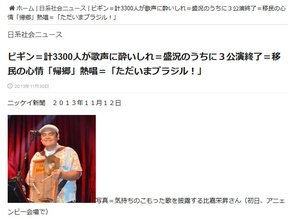
And in November, 2013, BEGIN, a popular band from Okinawa, shouted “We’re home!” in front of their 3,300 fans who filled the venue, most of whom were Okinawans, at their first concert in Brazil. I’ve been to countless number of events hosted by various prefectural associations, yet the Okinawans are the only people who have the perspective of seeing the “world” as their home.
In many ways, Okinawans have been for a long time released from the idea of Japan being their ultimate home. Our people are everywhere around the world—I feel that their locally global view is at the root of their power to fight against the Japanese government in the base controversy.
Unless the history of immigration gets incorporated into its contemporary history, Japan will not be able to make its first step toward becoming an “oceanic nation,” with the thoughts of Japanese people connected to the world.
© 2015 Masayuki Fukasawa


